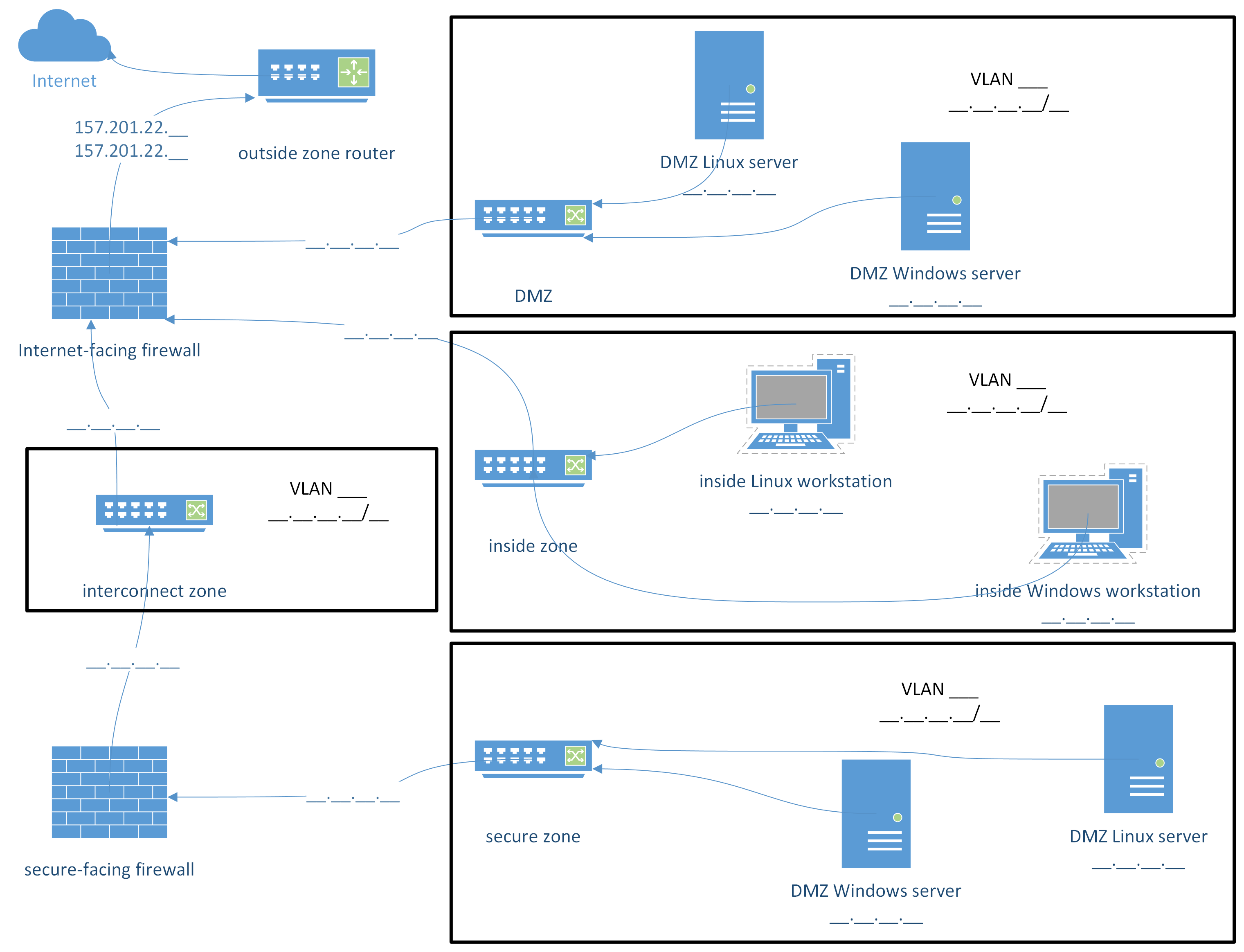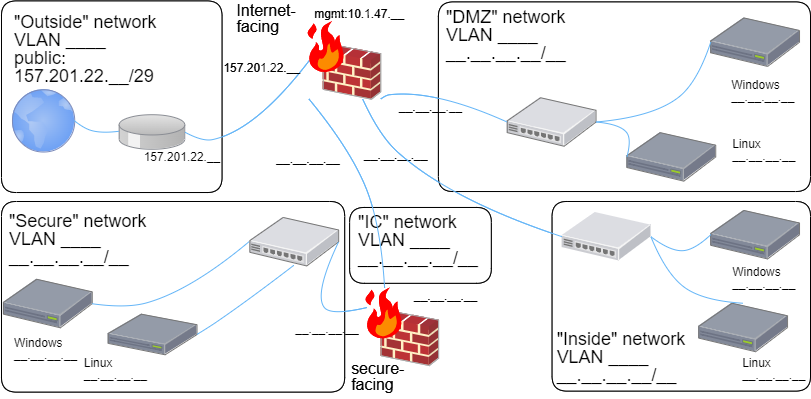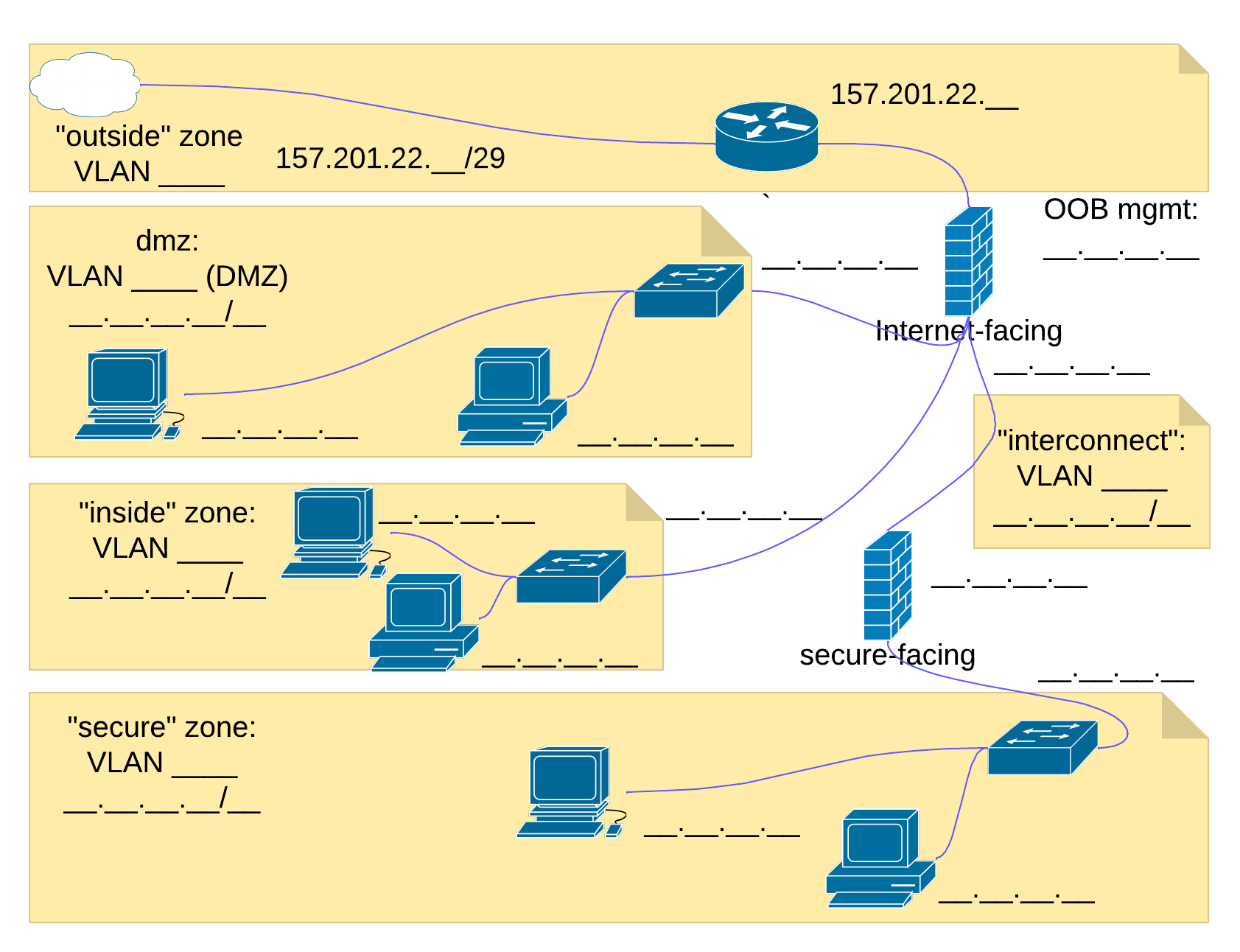Create and maintain a professional-quality network diagram that documents your team’s security architecture.
(Recommended) Here are some links to web-based applications students have successfully used to create their diagrams:
(Optional) You may also install and use desktop workstation software to create a network diagram. Examples:
Microsoft Visio. This is the premier diagramming tool used by industry network and security professionals. It’s a little challenging to learn, so Visio proficiency looks attractive on a job-seeker’s résumé. It is also expensive, but BYU-Idaho students may obtain a copy of Visio software at no cost:
(Not Recommended) It is possible to make network diagrams using general purpose drawing tools such as Microsoft Paint, or Inkscape, or Adobe Illustrator, or GIMP, or the “Word Art” features in Microsoft Word/PowerPoint, or printing a Cisco Packet Tracer diagram. Please don’t use any of these for this task.
Include four security zones in your network diagram:
“outside” (untrusted - alas, the rest of the Internet is not yours to create nor control)
Specify two firewalls as perimeter devices between your zones:
Specify at least two computer “end points” in the dmz, two in the inside zone, and two in the secure zone. Your firewalls will enforce network security policies for various endpoint machines, such as:
Leave room in your diagram to add some annotations later. In future assignments, you will annotate your diagram to include OSI-model layer information:
Upload an image, in either PDF or PNG file format, of your completed diagram.
Here are some example diagram templates that were created using some of the tools mentioned above. (Notice most of the important information is left blank. Your team must “fill-in-the-blanks” with relevant information as the semester progresses, but you should already have the relevant information you need to fill in at least some of the details.)
Example drawn using Microsoft Visio: 
Example drawn using Cacoo: 
Example drawn using diagrams.net: 
Example drawn using Lucidchart: 